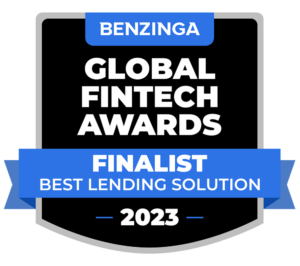
Nearly 80% of consumers use some form of digital banking
Just as a Digital banks are giving tradition banks a run for their money
Just as a desktop computer has given way to smartphones, banks – the last bastion of brick-and-mortar businesses – are getting a “digital” makeover, and consumers are starting to take notice. If you haven’t already, say hello to the rise of digital banks.
While most of us have still used a bank’s drive-thru or ATM to deposit our checks or take out some cash to get us through the week, the digital banking sector has been steadily growing over the last five years, to the point that close to 80% of Americans now use some form of digital banking service, a number that coincides with a decline of physical bank branches.
“This is not requiring people to buy an electric car and spend time trying to find a place to charge it while traveling. Digital Banking saves time and is the future,” Richard Gusmano, the founder and CEO of BCCUSA, told ConsumerAffairs.
“Banks that can be nimble and forward-thinking will capture more business and those that will not will eventually be ‘pay phones.’”
What’s not to like?
The people who are crossing over to the digital banking side don’t seem to mind the absence of real people behind a desk or a teller window because what they’re getting in return is far better. The big advantage is that you’re basically doing all your banking via an app, anytime, anywhere.
But there are several more inviting advantages. One is that digital banks offer attractive yields.
Entities like My Banking Direct, Western Alliance, Jenius Bank, Forbright Bank, and Bask Bank are now providing high-yield savings accounts with APYs up to 10 times the typical rates offered by local banks.
The second plus is where online banks really shine: savings. Many offer either no or low-fee arrangements. However, as Raisin President Ben McLaughlin told ConsumerAffairs, you need to read the fine print and ask questions.
And because they don’t have the cost of maintaining a physical branch and all the costs related to rent, insurance, etc. that comes with it, they can pay you a better rate of interest.
They also feel like they’re getting some love they weren’t getting from the employees behind the desks.
“They’re also doing more to compete for our business than bigger institutions,” McLaughlin said.
Efficiency can be better, too. One thing to like about digital banking is the bill-paying process. Apps make it a lot cleaner and quicker these days and you can ensure bills are paid on time, late fees are avoided by scheduling payments in advance, and gone are the days of sitting and waiting for a deposit or check to be posted.
Safety: issue or not?
When you bring up digital banking to someone who’s never stuck their toe in that water, they usually question the safety factor. And, because there’ve been lots of scams and complaints about companies like Venmo and PayPal, that may be understandable.
However, these banks aren’t person-to-person payment platforms. They’re real banks, just without the marble floors, but just as legit as a physical bank. If a digital bank is FDIC insured, it means your money is safe and secure as any of the big boys like Chase or Wells Fargo.
Online banks are also obsessed with security – encryption, multiple login steps, and constant fraud monitoring – because without those protections in place, they could easily implode if something goes wrong.
In the final analysis, “Safety is a non-issue with appropriate measures for authentication,” Gusmano asserts.
The human factor: a deal breaker?
Just like with every other business segment that’s forcing us to be digitally-dependent, bank contact centers are falling short as well, as the World Retail Banking Report 2024 by Capgemini reveals.
We’re at their mercy while all banks – traditional and digital – try to adopt technologies that can be more “intelligent” and understand what exactly we want to know when we have a question.
Physical banks have a slight advantage over digital banks for the short term, but while digital banks are more dependent on things like chatbots to offer basic answers, some are offering live chat in situations where you need an actual human to help if you’ve got a complicated matter you need to resolve.
If you decide to try digital banking and get stuck, don’t give up. These digital banks realize that if they’re in bed with technology, it has to work in their favor.
Some digital banks have community forums where users can post questions and receive answers from other customers or bank moderators. They are also adding email, phone support, video chat, and social media to fill in the gap. Consumers should not hesitate to use multiple channels if one does not provide a satisfactory response.




















